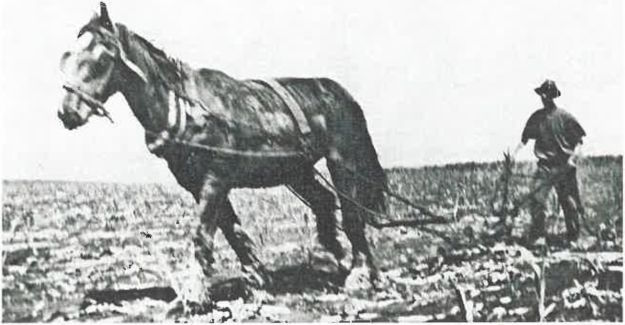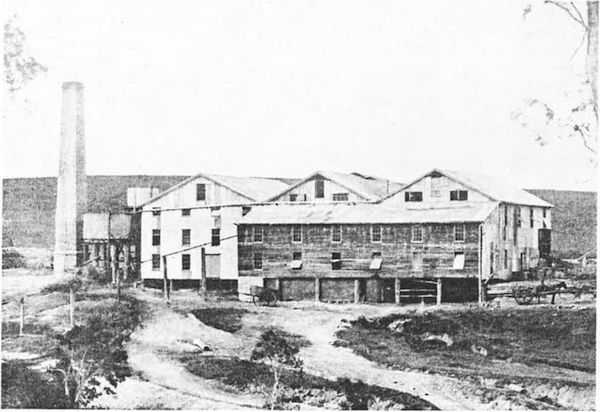On Thursday October 18th
1900, twenty-two children from nine Goodwood families enrolled at the
new Goodwood Provisional School. The first teacher, Miss Annie Dodd,
would have looked on while the children stepped up onto the verandah and
entered the classroom to begin their studies, much like today. Their
respective fathers were listed in the School Register as Station Master,
Railway Worker, Miner, Labourer, Bricklayer, Selector, Mill
Manager, Farmer and South Sea Islander.
It is amazing to consider that a little over
forty years earlier, the only people in the area were a handful of
enterprising pioneers on pastoral leases, transient timber-getters and
Aborigines who had not retreated or vanished. In the 1860s, Maryborough
was a thriving well-established town with a port, and was a centre for
farming, in particular, sugar cane growing. The land which later became
Bundaberg was only just opening up and so the area between the two towns
was still barely known.
However, word began travelling south about great
stands of timber in what is now the Childers area, a
rainforest wilderness known as the Isis Scrub. Timber in large
quantities was needed not only to house the hundreds of new immigrants,
but also to fuel the Maryborough sugar mills.
In 1868, the Queensland Government enacted the Crown Lands Alienation Act, which allowed people to select parcels of land for their own use. The Act “made
large tracts of land available for agricultural selection, providing
the opportunity for those with modest capital to establish themselves on
the land … In the Isis, selectors looked to the red soil ridges
supporting the fine stands of timber”. As the wave of selectors washed into the Isis, the Aborigines found that “the land which had sustained them steadily lost its value for hunting and gathering."
Most of the first selectors were loggers who worked areas near rivers so they could float their logs downstream, then raft them
to Maryborough, a practice that continued for a number of years. On the
Gregory River, an area known as Ascot Crossing, or “the rafting
ground”, was the most convenient spot for the loggers to float their
timber. The loggers blazed new trails where there were none, staying on
their land long enough to remove the best timber, then moving on.
One very early selector was Charles John West who
in July 1869, took up 248 acres on the north side of the Gregory River,
naming the area Goodwood. Over the next few years he was to expand his
holding by making further selections on both sides of the river until
the Goodwood Plantation encompassed around 2500 acres. West grew a
variety of crops including maize, figs, oranges, bananas and pineapples
as well as growing about 170 acres of sugar cane. The rest of the
property was used for grazing of his 500 horses, 600 cattle and
Berkshire pigs.

This was a time of rapid development when
entrepreneurs could make fortunes. In 1876, the Railway was still over
ten years away, therefore travel by ship or coach were the only options
for those who could not ride or walk from place to place. Charles West
therefore began operating a coach run for travellers from Maryborough
through the blossoming areas of Howard, Horton, Goodwood and on to
Bundaberg. The route would of course incorporate his own Goodwood coach
stop, where fresh horses could be procured for the rest of the journey.
Along with that coach run, he also established a coach run from Abingdon
to Musket Flat, on the old Maryborough-Gayndah Road.
When West formed a partnership with Robert
Blissett is not clear, but Blissett’s finances were a huge asset to them
both. In 1885 they established the Goodwood Sugar Mill, the first sugar
mill in the Isis District. Early that year, the equipment had been
shipped up the Gregory River to within 8 miles of the mill site. From
there, the equipment was hauled to Goodwood by teams of bullocks. Many
workers were employed at the Goodwood Mill and Plantation, including 42
Kanaka labourers. The Plantation’s own cane was crushed, along with
that of other neighbouring farmers. Mr Risebrook and Mr Carl Thoms were
the only local cane growers to supplement the 250 acres of Goodwood
Plantation cane in the 1886 crushing. By mid-year, the mill was
producing fine white sugar said to equal the best made at Mackay.
Goodwood was now on the map.

ABOVE: Goodwood Sugar
Mill, the first mill to be built in the Isis district, crushed sugar
from 1885 to 1917. Goodwood owes its existence to the Goodwood Mill and
Sugar Plantation. Photo courtesy John Oxley Library.
When the Goodwood Railway Station [then known as
Gregory Station] was opened on August 1887, it heralded further
development of the area, as well as being a great improvement on West
and Blissett's local coach run, which ceased operation when the railway
line reached Bundaberg six months later. The new community desperately
needed a school. Abingdon school opened in 1881 and for a time, some
Goodwood children travelled there, and later to Horton School, by coach.
Others who lived nearer the railway, sent their children by train to
Howard. Both trips involved considerable time and inconvenience. No
wonder they began lobbying for a school at Goodwood!
Finally on October 7th 1899, a meeting
was held at Mr Blissett’s residence to discuss the formation of a
school. While certainly not the only ones to support a school, those
present were the ones whose names were recorded in the original Minutes
book. But many others also worked hard to achieve their dream of a
school at Goodwood.
This article first published in "Visions and Dreams: The Centenary of Goodwood State School 1900 - 2000", p10, compiled by Robyn Housechildt and Sonia Furlonger.
References made include:
“Only Room For One; A
History of Sugar in the Isis District ” by John Kerr, pp 11-18
“Southern Sugar Saga" John Kerr, p 34 “Taming the Isis", B. O'Neill,
p87, pi28.
Interview with Mr Richie Webb.